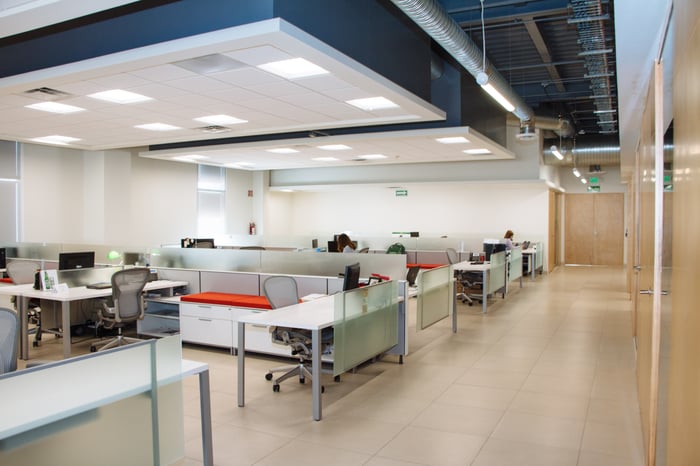This is a contributed post by S. Ann Earon, Ph.D., president of Telemanagement Resources International Inc. (TRI) and Founding Chairperson of IMCCA, the non-profit industry association for conferencing, collaboration, and unified communications. She can be reached via email at AnnEaron@aol.com.
While the world is still in the midst of a pandemic, with testing, tracing, and treatment still in progress, and a vaccine many months away, there is a need to consider what it means to transition back to the office.
Any return to work before a vaccine is available will have employees distanced and possibly masked. Many offices will operate at a reduced capacity, perhaps with staggered workdays and hours. Places where employees normally gather – conference rooms, cafeterias, breakrooms – may be off-limits. Corporate culture as we have known it, with ongoing employee interaction, may never return.
Changes to the Physical Office
Office planners are working on a new workplace with new cubicle designs, upgraded ventilation systems, and touchless everything (elevator buttons, door entrances, faucets, etc.). The open workspace environments of today, with employees sitting close together, will be in the past. Emphasis will be placed on rigorous cleaning protocols that will be followed throughout the day, not just after work. Testing and tracing systems will also be important to ensure the health of employees.
While the best hazard mitigation may be working from home, at some point some people will want and need to return to an office environment. Others will find working from anywhere more productive and attractive.
Video is Now Pervasive
In recent weeks, organizations have had to scale up collaboration tools for remote work, improve security capabilities, equip the workforce with laptops and other productivity devices, and strengthen networking and communications infrastructure. Videoconferencing will become more common in the office as employees continue to use the technology to maintain social distance. People will join virtual meetings instead of walking to a conference room.
Transitioning back to the office, as a component of the hybrid working model, means the need for robust communications tools to share information and collaborate in rich ways at anytime from anywhere.
How Pexip Can Help
Meetings should be simple. Given the huge growth in demand for video meetings and interoperability, it is important that video meetings be easy for anyone to host and join, and the technology behind them should just work.
With Pexip it is easy to host and join video meetings from any device using its robust meeting platform. Meeting attendees can join meetings from anywhere, regardless of whether they are using video conferencing systems, telephones, web browsers, or laptops. Pexip is where teams and technology meet, simplifying video conferencing experiences and workflows. Pexip helps break down barriers to improve video communication across teams and platforms.
The new workplace environment is an investment in productivity, employee well-being, and profitability. Deployment flexibility is important for interoperability that provides value and drives usage. Employees need to work where they are most productive. Technology simplicity and interoperability will be keys to successful communications.
- Digital transformation
- Connect





